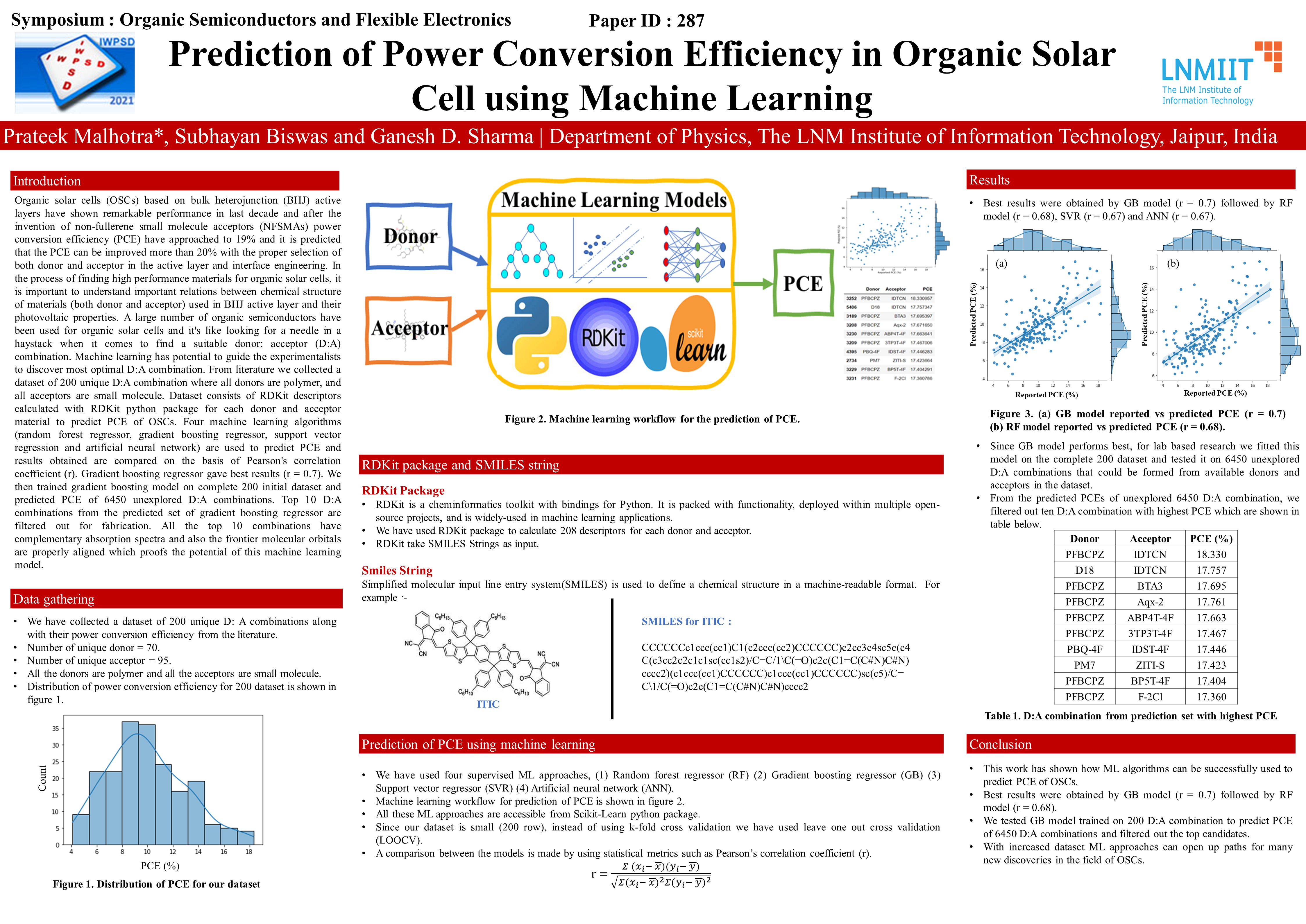Organic solar cells (OSCs) based on bulk heterojunction (BHJ) active layers have shown remarkable performance in last decade and after the invention of non-fullerene small molecule acceptors (NFSMAs) power conversion efficiency (PCE) have approached to 19% and it is predicted that the PCE can be improved more than 20% with the proper selection of both donor and acceptor in the active layer and interface engineering. In the process of finding high performance materials for organic solar cells, it is important to understand important relations between chemical structure of materials (both donor and acceptor) used in BHJ active layer and their photovoltaic properties. A large number of organic semiconductors have been used for organic solar cells and it's like looking for a needle in a haystack when it comes to find a suitable donor: acceptor (D:A) combination. Machine learning has potential to guide the experimentalists to discover most optimal D:A combination. From literature we collected a dataset of 200 unique D:A combination where all donors are polymer, and all acceptors are small molecule. Dataset consists of RDKit descriptors calculated with RDKit python package for each donor and acceptor material to predict PCE of OSCs. Four machine learning algorithms (random forest regressor, gradient boosting regressor, support vector regression and artificial neural network) are used to predict PCE and results obtained are compared on the basis of Pearson's correlation coefficient (r). Gradient boosting regressor gave best results (r = 0.7). We then trained gradient boosting model on complete 200 initial dataset and predicted PCE of 6450 unexplored D:A combinations. Top 10 D:A combinations from the predicted set of gradient boosting regressor are filtered out for fabrication. All the top 10 combinations have complementary absorption spectra and also the frontier molecular orbitals are properly aligned which proofs the potential of this machine learning model.

prateek-malhotra / prediction-of-power-conversion-efficiency-in-organic-solar-cells Goto Github PK
View Code? Open in Web Editor NEWLicense: GNU General Public License v3.0

